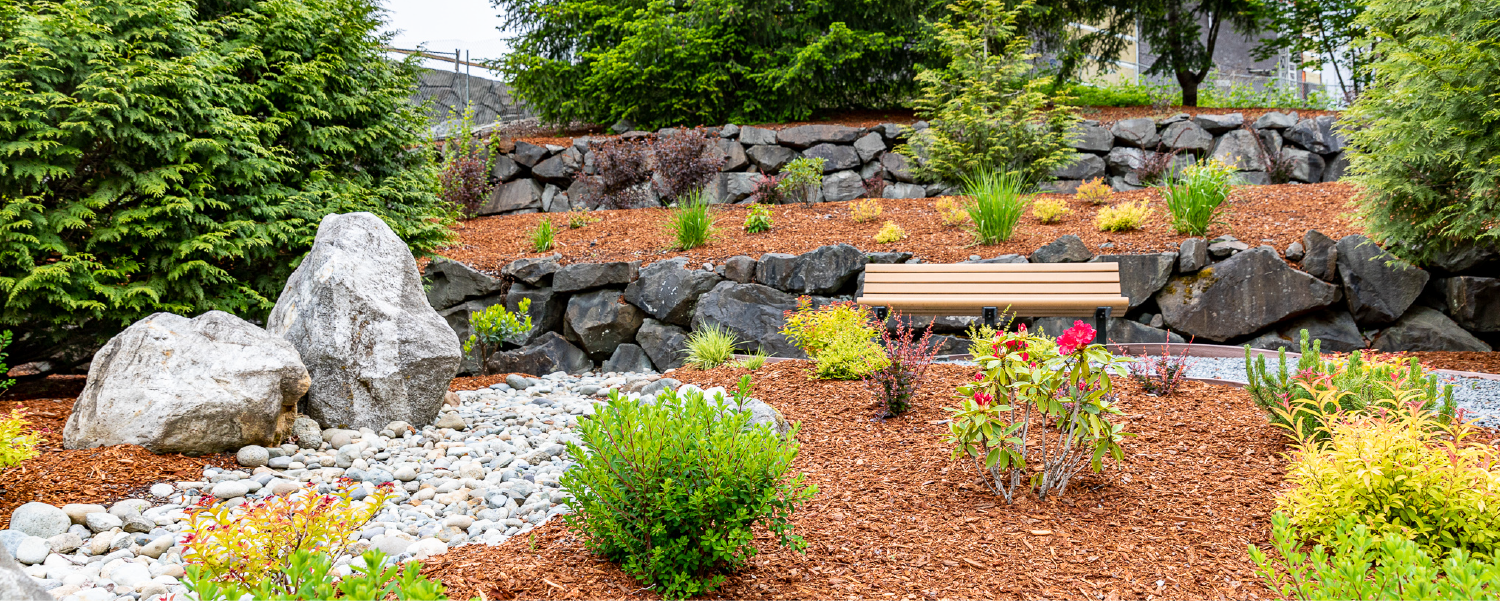Monarch Landscape Companies helps commercial properties across the Pacific Northwest — from Seattle and Tacoma to Portland and Bellevue — prepare their landscapes for the cool, wet months ahead. One of the simplest yet most impactful fall maintenance tasks? Mulching.
Below, we’ll explain why now is the perfect time to mulch, the benefits for your property, and how it supports long-term plant health across our region’s unique climate.

Why Should You Mulch in Fall?
Fall is the ideal time to mulch in the Pacific Northwest because soil temperatures are still warm, allowing beneficial microbes to stay active as plants enter dormancy. Adding mulch before winter helps regulate soil temperature, retain moisture, and protect roots from heavy rains and frost.
Mulching now also prepares your landscape for spring — reducing weeds, improving soil structure, and creating a clean, polished look for commercial properties through the winter months.
What Are the Benefits of Mulching for PNW Landscapes?
In our region’s mix of rain, wind, and cool temperatures, mulch does much more than look good. It plays a critical role in protecting and nourishing your landscape.
- Erosion control: Keeps soil and nutrients in place during heavy rainfall.
- Weed suppression: Blocks sunlight to reduce early spring weed growth.
- Soil health: Organic mulch breaks down over time, enriching soil with natural nutrients.
- Moisture retention: Helps plants maintain consistent hydration even through fluctuating weather.
- Temperature regulation: Acts as insulation for roots against winter frost.
What Type of Mulch Works Best in the Pacific Northwest?
For PNW landscapes, Monarch recommends organic mulches such as bark, composted wood chips, or leaf mulch. These materials complement the natural environment, support soil microbes, and gradually improve the soil structure.
We avoid synthetic or dyed materials that can disrupt water absorption and plant health — opting instead for sustainable, regionally sourced options whenever possible.

How Often Should You Replace Mulch?
Mulch naturally decomposes over time, especially in the Pacific Northwest’s wet climate. For most commercial landscapes, Monarch recommends refreshing mulch once a year — ideally in the fall.
A 2–3 inch layer provides the perfect balance of protection without suffocating roots or preventing water infiltration.
Monarch’s Approach to Mulching for Commercial Properties
At Monarch Landscape Companies, we tailor mulch applications based on plant type, bed design, and drainage conditions. Our crews ensure even coverage and proper clearance around plant stems and trunks to prevent rot and disease.
For our commercial clients, we often pair fall mulching with seasonal cleanup, leaf removal, and plant health care to prepare your property for a vibrant spring revival.
FAQs About Mulching in the Pacific Northwest
Q: Is it too late to mulch in November?
No — in fact, late fall is one of the best times to mulch before winter sets in. It locks in soil warmth and moisture during dormancy.
Q: Does mulch attract pests?
When applied correctly, mulch does not attract pests. Monarch ensures proper spacing from building foundations and trunks to maintain airflow.
Q: How much mulch should I use?
Apply a 2–3 inch layer evenly across beds, keeping it about 2 inches away from plant bases.

Keep Your Landscape Protected All Season Long
Mulching now sets your landscape up for success through the wet winter months and into spring. Monarch Landscape Companies proudly partners with property managers, HOAs, and commercial owners throughout the Pacific Northwest to maintain healthy, beautiful, and sustainable outdoor environments.
Contact Monarch Landscape Companies to schedule your fall mulching service and protect your investment for the seasons ahead.


.jpg)
